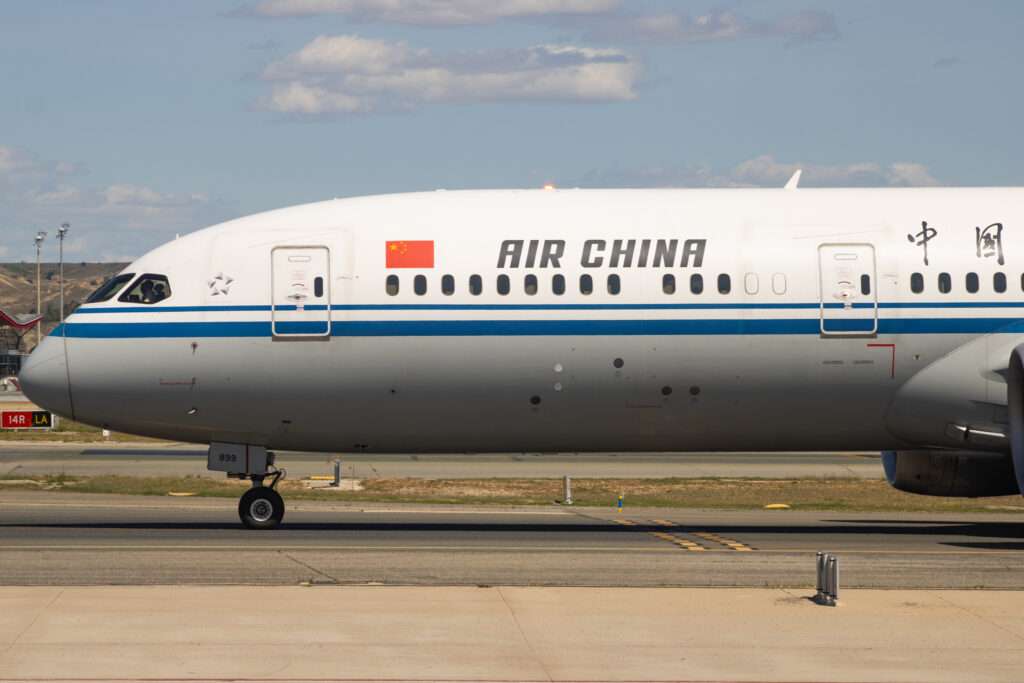Air China, a global giant in the aviation industry, boasts a rich history intertwined with China’s economic rise.
Established in 1988, the airline traces its roots back to a singular entity – the Civil Aviation Administration of China (CAAC).
This article delves into the evolution of Air China, from its beginnings as a state-owned carrier to a publicly traded international force.
From One to Six: The Birth of Air China

Prior to 1988, China’s civil aviation landscape was dominated by the CAAC.
This monolithic organization handled all domestic and international flights.
However, recognizing the need for modernization and competition, the Chinese government made a pivotal decision in 1987.
They restructured the CAAC, splitting it into six independent airlines, with Air China taking center stage.
Air China inherited the responsibility for intercontinental flights.
It absorbed CAAC’s long-haul aircraft, including Boeing 747s, 767s, and 707s, along with established routes.
Furthermore, this instant fleet and network provided a solid foundation for the fledgling airline.
Furthermore, Air China was designated the national carrier.
It was entrusted with carrying China’s flag on international routes – a symbol of the country’s growing aviation ambitions.
Early Years: Growth and International Partnerships
The late 1980s and 1990s witnessed Air China’s steady expansion.
The airline focused on acquiring new, modern aircraft like Airbus A320s and Boeing 737s to cater to a growing domestic market.

Internationally, Air China established crucial partnerships with established carriers.
A notable example was the 1989 joint venture with Lufthansa German Airlines, which led to the creation of the Beijing Aircraft Maintenance Center (Ameco Beijing).
This collaboration brought valuable expertise in aircraft maintenance and signaled Air China’s commitment to international cooperation.
Merger and Rebranding: The Dawn of a New Era at Air China
The turn of the millennium ushered in a new chapter for the airline.
In 2002, following a government-led industry reform plan, Air China underwent a significant restructuring.
It merged with China National Aviation Corporation and China Southwest Airlines.
This consolidation created a powerhouse airline with a vast domestic network and an even stronger international presence.
The newly formed entity adopted the name “Air China International Corporation” in 2003.
However, this moniker was short-lived.

Recognizing the need for a brand that resonated with a broader audience, the company rebranded itself as “Air China Limited” in 2004.
This move marked a significant step towards a more market-oriented approach.
Going Public and Embracing the Global Stage
A milestone achievement for Air China arrived in December 2004.
The company successfully listed its shares on both the Hong Kong Stock Exchange and the London Stock Exchange.
This initial public offering (IPO) not only raised significant capital but also cemented Air China’s position as a major player in the global aviation market.
Since its IPO, Air China has continued its relentless pursuit of growth and innovation.
The airline has expanded its fleet with fuel-efficient models like the Boeing 787 Dreamliner and the Airbus A350 XWB, making it a leader in eco-friendly aviation.
Additionally, the airline has actively pursued strategic partnerships with other airlines, forming alliances like Star Alliance to offer passengers a wider network and seamless travel experiences.
Looking Ahead: A Phoenix Rising
In conclusion, the airline’s journey reflects China’s own economic transformation.
From a state-owned carrier to a publicly traded global player, the airline has mirrored the country’s increasing openness and integration with the world.
As China continues to grow economically, the airline’s is poised to play a vital role in connecting the country to the rest of the globe.
Challenges remain, such as intense competition and fluctuating fuel prices.
However, with a rich history of strategic partnerships and a commitment to modernization, Air China, like the mythical phoenix, is well-equipped to rise above any obstacle and continue soaring through the skies.

Click the banner to subscribe to our weekly newsleter.

Click the photo to join our WhatsApp channel so then you can stay up to date with everything going on in the aviation industry!









